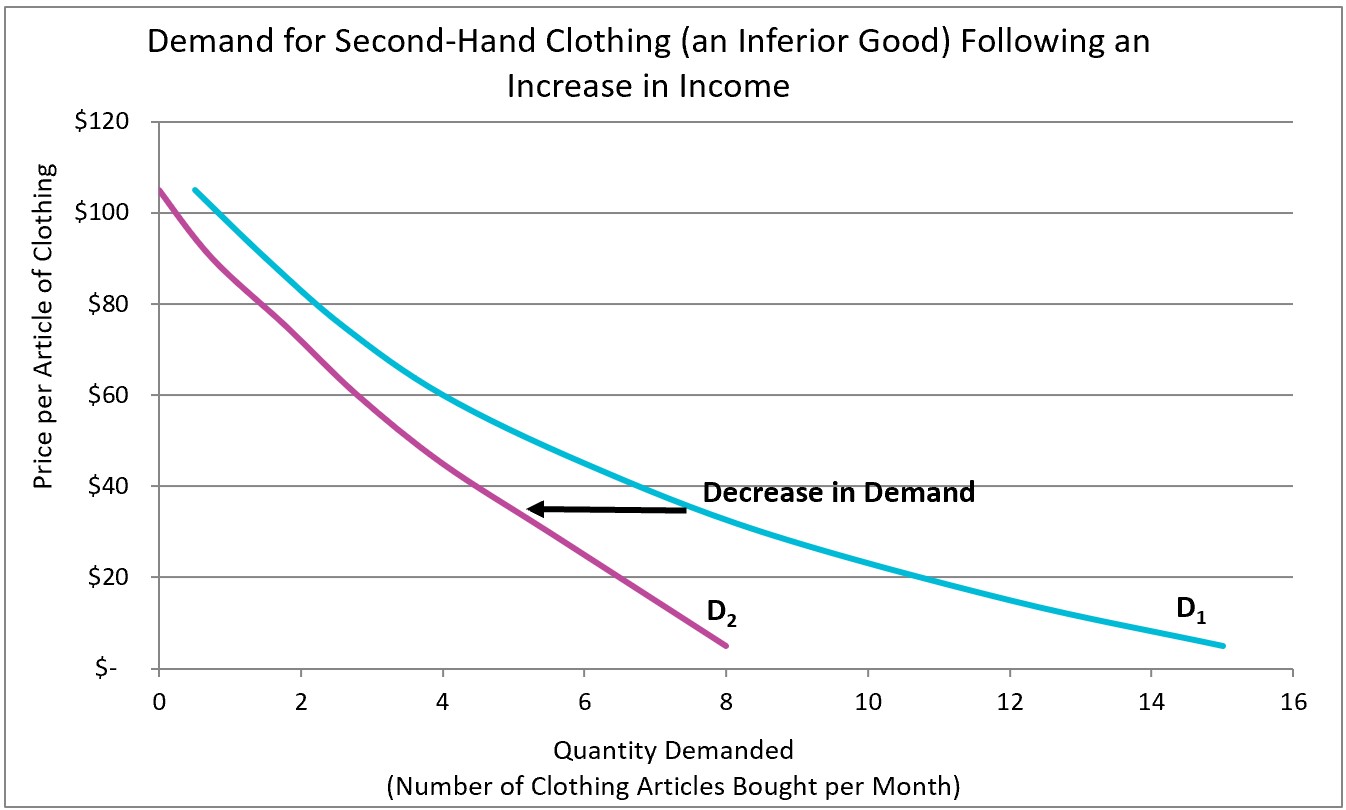An inferior good is a good for which the demand is inversely related to income, which means that if a person’s income increases, the demand for an inferior good will decrease.
When your income decreases, do you purchase more of a particular good or service? Perhaps you would buy second-hand clothes at a thrift store, or, if you needed a car, you would buy a used car rather than a new car. Maybe you would take a bus, instead of hailing a taxi. Second-hand clothes and used cars are examples of inferior goods. Using a bus is an example of an inferior service if you would prefer to use a taxi. Note that “inferior” does not refer to the quality of the good. Instead, economists use inferior to describe the relationship between the demand for a good and a change in a consumer’s income.
Inferior goods have demands that are inversely related to income. As income increases, the demand for a product decreases, so the demand curve shifts to the left. A drop in income would result in an increase in the demand for the good or service, and the demand curve for the inferior good would shift to the right.
Inferior goods usually have more appealing substitutes, which consumers will switch to following a rise in income. For example, clothes from a thrift store and new clothes are substitutes. As income increases, consumers purchase new clothes and less from thrift stores, as shown below in a leftward shift from D1 to D2 of the demand for second-hand clothes from a thrift store.

Demand – The Consumer’s Perspective
Changes In Demand – When Consumer Tastes Change
Supply and Demand –
Producers and Consumers Reach Agreement
Fiscal Policy –
Managing an Economy by Taxing and Spending